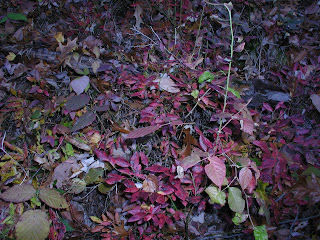From the Earth Portal (see original link at
http://www.earthportal.org/news/?p=304 )
Markey asks FTC to develop carbon offset standardsJuly 19th, 2007
By Michael Burnham
E&E News: Buying and selling voluntary
carbon offsets is a $100-million-a-year industry today, with few signs of slowing down. It’s also largely unregulated, with plenty of room for error.
But Rep. Ed Markey (D-Mass.) wants to change that and yesterday asked the Federal
Trade Commission to come up with guidelines meant to “ensure voluntary carbon offsets are productive commodities, both for
consumers and for the climate,” he said in a statement.
Markey’s letter asks FTC to look at how recycled products, for instance, are marketed to consumers and establish similar guidelines for marketing verifiable carbon offset products.
His announcement came after a House hearing in which lawmakers and industry experts said greater transparency and standardization tools are needed to police such offsets.
The industry has begun earnest efforts to police itself, but stakeholders who testified yesterday before the Select Committee on Energy Independence and Global Warming disagreed over how much government intervention may be needed to ensure that the public doesn’t lose confidence in offsets as a potential tool in a mandatory carbon cap-and-trade system.
“We need to bring order to this market, to ensure that consumers don’t get ripped off, that this sort of funding for carbon reductions isn’t wasted,” said Select Committee Chairman Markey, who supports
legislation that would impose the most aggressive curbs on U.S. emissions. “The question is what kind of sheriff do we need.”
Unlike the European Union, the
United States has not ratified the
Kyoto Protocol and is not subject to a mandatory cap on greenhouse gas emissions. E.U. electric utilities and other carbon-intensive industries must cut their emissions or buy offsets on a regulated market to stay below the cap, but U.S. firms may buy offsets voluntarily on a climate exchange or directly from an offset company or project developer.
Offset companies typically buy credits from developers who use the money to plant trees, improve a building’s efficiency or build low- or no-carbon renewable energy projects. The intermediaries then sell the credits to those who want to mitigate some or all of their emissions.
The World Bank projects that the voluntary market could swell to 400 million metric tons a year by 2010. Yet several recent news and nongovernmental organization reports have called into question the voluntary market’s credibility. Some companies are selling offsets based on projects that would have happened already, while other firms are selling the same offset several times over (
Greenwire, Sept. 21, 2006).
The global voluntary offsets marketplace is developing in a “regulatory vacuum” today, World Resources Institute senior associate Derik Broekhoff told committee lawmakers.
“Carbon offsets are completely intangible products, and their value depends entirely on how they are defined, represented and guaranteed,” he added. “What the market lacks are common standards for defining and guaranteeing carbon offsets in order to assure consumers that they are getting what they pay for.”
The Switzerland-based International Emissions Trading Association is one of several nonprofit groups that are developing standardized auditing tools to prove that offset vendors’ supplies equal their sales and retired offsets are the same as those advertised.
The San Franciso-based Center for Resource Solutions, for example, is developing a “Green-e” label for offset providers that would show they have opened their books to an independent supply and sales audit. The label would also enable a buyer to see where its offset comes from (
Greenwire, May 17).
Also in California, a new carbon offset program run by PG&E — called “Climate Smart” — will rely exclusively on the quasi-private California Climate Action Registry to verify offset projects the utility and its stakeholders might pursue to reduce the carbon dioxide output of its customers (
Greenwire, July 5). The registry has in essence established its own standards (or protocols) to loosely govern the voluntary market.
Joseph Romm, a senior fellow with the Center for American Progress, applauded such auditing tools. However, he suggested that federal regulators should take the lead role in developing standards for voluntary offsets as a bridge to an eventual mandatory cap-and-trade scheme in the United States.
Executives whose companies sell offsets, meanwhile, debate how great of a regulatory role the government should play.
Russ George, president and CEO of the Foster City, Calif.-based offsets provider Planktos Inc., welcomed government intervention in the voluntary market as a way to bolster its credibility with consumers.
By effectively communicating how and where its emissions-reduction credits are derived, offset providers can improve the market’s credibility without government intervention, said Thomas Boucher, president and CEO of Charlotte, Vt.-based NativeEnergy LLC.
“The voluntary offset market at this point does not need government regulation,” added Boucher, who said his company sells offsets that meet the “additionality” rule, in accordance with the United Nations Framework Convention on Climate Change.
While NativeEnergy is one of more than 50 companies that sell voluntary offsets today, the Center for American Progress’ Romm suggested that the number of such companies operating in the United States may decrease if carbon caps become a reality.
“Once a mandatory cap-and-trade system is in place, I believe that voluntary offsets marketplace will largely disappear,” Romm added. “People may still wish to purchase offsets to become carbon-neutral, but then they will almost certainly just purchase credits and allowances on the regulated traded market.”
George disagreed. He pointed to a thriving voluntary offsets market alongside the regulated E.U. cap-and-trade scheme.
“We’re not going to solve [climate change] if there are competing factions,” George added. “We need to look at all of the possible solutions as fast as we can.”
























